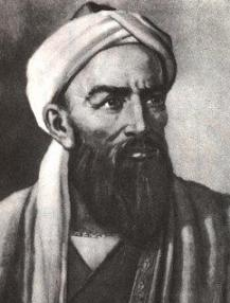
The word polymath comes from the Greek for ‘having learned much,’ and refers to someone whose expertise spans a significant number of different subject areas. Rather than a ‘jack of all trades’ or someone who is interested in a variety of things (which hopefully we all are!) the true polymath manages to excel in each of the fields they participate in. These should also be very different subjects, making the achievement even more remarkable.
The word ‘polymath’ is often used interchangeably with the term ‘Renaissance Man’. During the fourteenth to sixteenth centuries in Italy, scholars began to reject the narrow approach to education which had been pursued throughout the medieval age. They tried to return to a more classical ideal, which valued a wide range of knowledge, believing that humans were limitless in their capacity for development. At this time a gentleman was expected to speak several languages, play a musical instrument, write poetry, and be knowledgeable about grammar, history and philosophy. The renaissance ideal for a broad education even led to our word ‘university’—meaning the seat of a universal education. A famous conduct book by Baldassare Castiglione called The Book of the Courtier set out the areas of knowledge expected from the proper gentleman, but also stipulated that he performs his talents with the appropriate sprezzatura attitude. This meant that as well as being remarkably accomplished, you had to be detached and nonchalant about it, and not show off.
It’s no wonder that one of the most famous polymaths was alive during the Renaissance. Leonardo da Vinci (pictured) was born in 1452, and was apprenticed at the age of fourteen to the leading painter and sculpture of the age, Verrocchio. Leonardo became an independent master in 1478 when his contribution to a collaborative piece with his employer was so good that Verrocchio apparently never picked up a paintbrush again. The gifted artist later went on to paint the famous Mona Lisa and The Last Supper. He also worked as an architect and an engineer, employed in Venice to design huge moveable barricades to protect the city from attack. The main evidence we have for Leonardo’s genius comes from his notebooks, of which over 13,000 pages remain. They contain numerous sketches and drawings, from anatomy and dissection to a variety of inventions, including musical instruments, hydraulic pumps steam cannons and even flying machines.

Of course the ‘Renaissance men’ were looked back to a Classical ideal, and no-one better embodies this than Aristotle. He was born in 384BC in Greece, and at the age of eighteen entered the famous Plato’s academy. Later he tutored the young Alexander the Great, before founding his own library in Lyceum, from which he offered free public lectures. Throughout his life we know he wrote as many as three hundred treatises, but sadly only thirty one of these survive. His writings cover a diverse range of subjects, from physics, biology, metaphysics, logic, ethics, aesthetics, poetry, theatre, music, rhetoric, linguistics, politics and government. Unlike his teacher Plato, Aristotle came to believe in Empiricism, the belief that knowledge could only be gained through sensory experience. He pioneered the subject of zoology, relying on observation to provide information on animals’ anatomy, diet and habitat. He also devised the first comprehensive system of Western philosophy.
Not all polymaths have come from the Western world. Al-Bīrunī (pictured) was a Muslim scholar born in 973 in the Khwarezmian region of the Persian Empire. He spent his first twenty-five years there studying Islamic law, theology, grammar, mathematics, astronomy and medicine under a Shah prince. When civil war broke out he fled to take refuge under the Sāmānid dynasty, where he had many different patrons before ending up under the warrior king Mahmūd. He accompanied Mahmūd on a campaign to India in 1017, and wrote the first history of the continent. In total he wrote 146 books, 95 of which were about astronomy, maths and related subjects. He devised his own method of working out the radius of the earth, using the height of a mountain, and used mathematical geography to determine the direction of Mecca. His book Chronology of Ancient Nations is one of the first works of anthropology, giving a universal account of various cultures.
I’ve chosen quite early examples of polymaths for this article. There are many polymaths from later ages: Benjamin Franklin born 1706, an author, political theorist, politician, printer, scientist, inventor, civic activist, and diplomat; Adam Smith born 1723, a writer on economics, philosophy, astronomy, literature and law; Mary Somerville born 1780, an astronomer, mathematician, physicist, chemist, mineralogist, and geologist. However, it becomes increasingly difficult to find true polymaths as the centuries roll on. Arguably this is because in our modern age we tend to value specialisation, as in a capitalist economy this is much more efficient.
Images: https://upload.wikimedia.org/wikipedia/commons/9/9e/Possible_Self-Portrait_of_Leonardo_da_Vinci.jpg
https://upload.wikimedia.org/wikipedia/commons/4/42/Al_biruni_28-02-2010.jpg

0 Comment:
Be the first one to comment on this article.